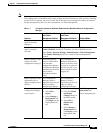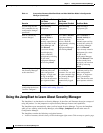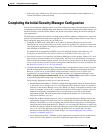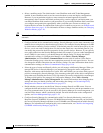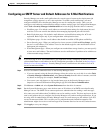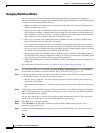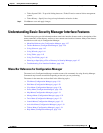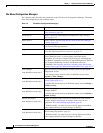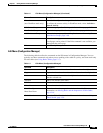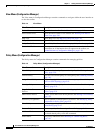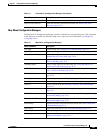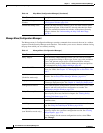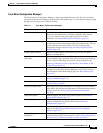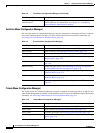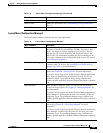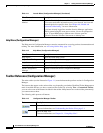
1-29
User Guide for Cisco Security Manager 4.4
OL-28826-01
Chapter 1 Getting Started with Security Manager
Understanding Basic Security Manager Interface Features
Edit Menu (Configuration Manager)
The following table describes the commands on the Edit menu in Configuration Manager. You can
typically use these commands only when you are working with a table in a policy, and some work only
for rules tables (see Using Rules Tables, page 12-7).
Discard
(non-Workflow mode only)
Discards all configuration changes since the last submission.
To validate the current activity in Workflow mode, select Activities >
Discard Activity.
Edit Device Groups Edits device groups. See Working with Device Groups, page 3-57.
New Device Group Adds a device group. See Creating Device Groups, page 3-60.
Add Devices to Group Adds a device to a group. See Adding Devices to or Removing Them
From Device Groups, page 3-60.
Print Prints the active page.
Not all pages can be printed. If the Print command is not available, you
cannot print the active page.
Exit Exits Security Manager.
Table 1-2 File Menu (Configuration Manager) (Continued)
Command Description
Table 1-3 Edit Menu (Configuration Manager)
Command Description
Cut Cuts the selected row in a rules table and saves it on the clipboard.
Copy Copies the selected row in a rules table and saves it on the clipboard.
Paste Pastes the rules table row from the clipboard to the into the rules table
after the selected row.
Add Row Adds a row into the active table.
Edit Row Edits the selected table row.
Delete Row Deletes the selected table row.
Move Row Up
Move Row Down
Moves the selected row up or down in the rules table. For more
information, see Moving Rules and the Importance of Rule Order,
page 12-19.
Global Search Opens the Global Search window. For more information, see Using
Global Search, page 1-39.



